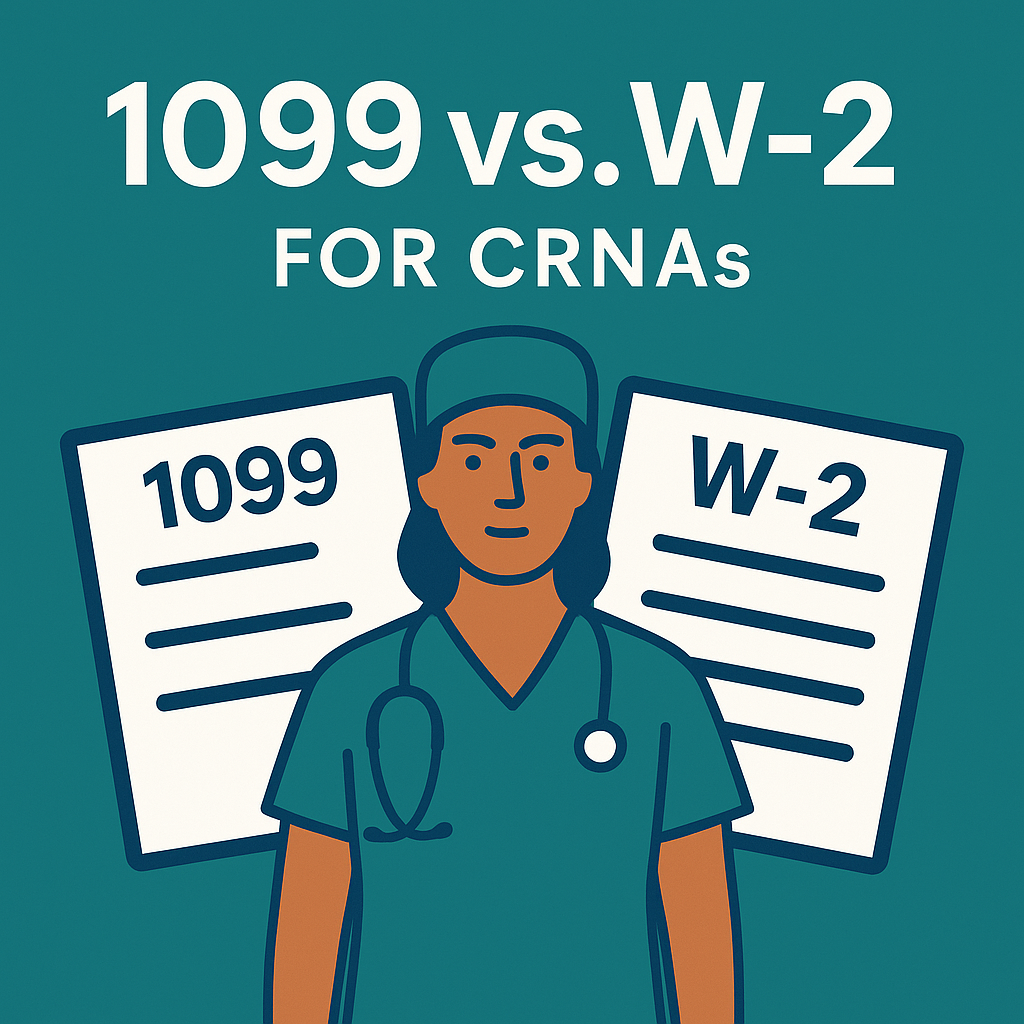In today’s post, we’re embarking on a journey through the financial landscape of CRNAs, specifically exploring the distinctions between being a 1099 independent contractor and a W2 employee. Whether you’re a fresh face in the field or pondering a career transition, grasping these differences is key to making informed decisions.
Understanding 1099 – The Independent Contractor Route
As a 1099 independent contractor, you’re both your ship’s captain and crew, meaning there’s no traditional employer to steer the course for you. This autonomy often comes with a higher income, as the company compensates for the benefits it no longer provides. However, this road is not without its bumps.
Being your own boss means forgoing certain perks, like employer-matched retirement contributions, malpractice insurance, and paid vacations. Considering these missing benefits is crucial when weighing 1099 positions against W2 roles.
Taxation is another twist in the 1099 journey. It’s a complex terrain, often requiring the guidance of a tax professional. You’re in charge of your own benefits like health and disability insurance, which can be costly, and you’ll also shoulder a heavier tax burden, contributing more to Social Security and Medicare.
The true financial picture of a 1099 role only emerges after deducting these additional costs and responsibilities from your gross income.
The W2 Employee Scenario
Switching to the W2 employee narrative, you might notice a lower base salary compared to a 1099 role. But this path comes with a cushion of employer-provided benefits, including health insurance contributions, malpractice coverage, retirement plan matches, and CME allowances.
The tax scenario is also less daunting as a W2 employee. You only pay the employee portion of Social Security and Medicare taxes. Once you tally up these benefits and subtract the costs, the financial landscape as a W2 employee can present a surprisingly competitive picture against the seemingly higher 1099 salary.
Case Study: A Comparative Analysis

To bring these scenarios to life, let’s examine a case study (details of my calculator used in the video above can be found here). Imagine you’re comparing a $110/hour W2 job with a $135/hour 1099 offer. The 1099 role initially appears more lucrative, but after factoring in unpaid vacations, benefits, and taxes, the financial gap narrows significantly.
This case study, complete with my downloadable calculator, helps you understand the nuances of each role, from out-of-pocket expenses to tax implications, enabling a like-for-like comparison.
Making an Informed Decision

When faced with job offers, a comprehensive understanding of these differences is paramount, especially if financial considerations are a top priority. It’s about seeing beyond the salary and considering the total financial impact, including benefits, taxes, and personal expenses.
Consulting with financial and tax professionals for personalized advice is always recommended. This ensures that your decision aligns with both your career ambitions and financial goals.
Conclusion
Choosing between a 1099 or W2 position is more than a mere career decision for CRNAs; it’s a pivotal financial and lifestyle choice. Understanding these differences is key to navigating your career path with confidence and clarity.

